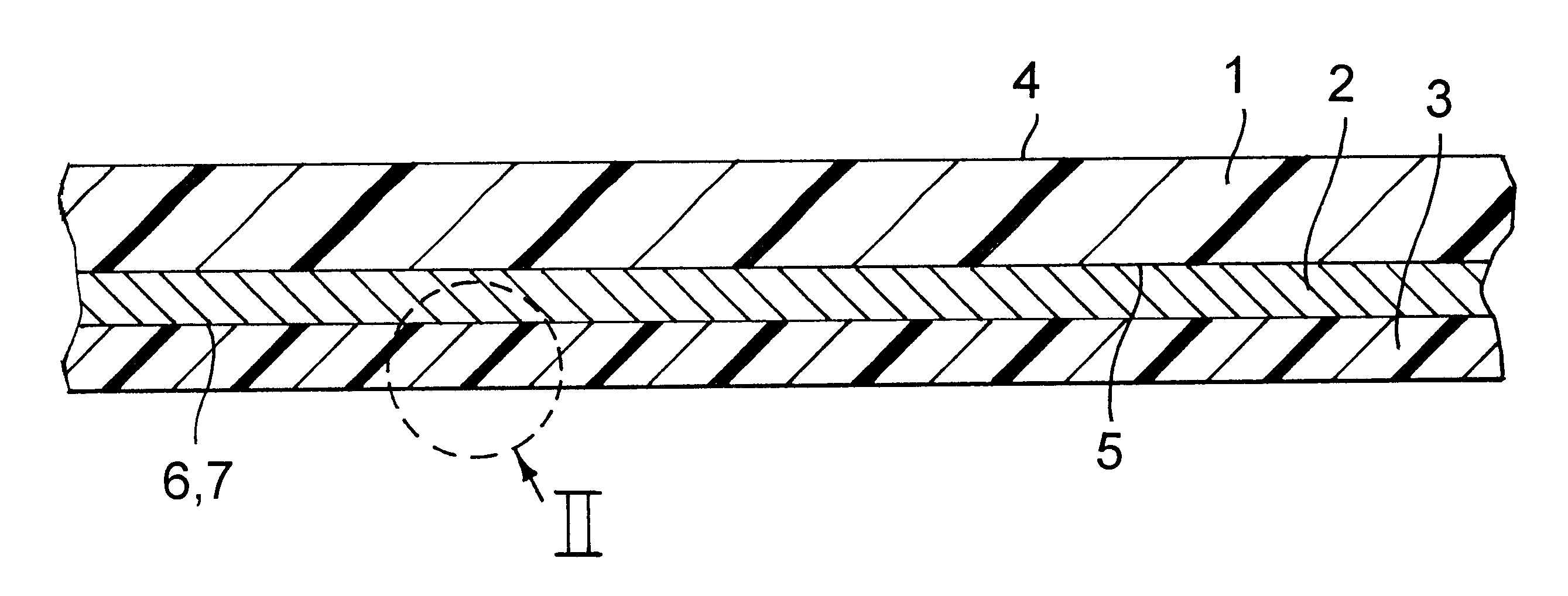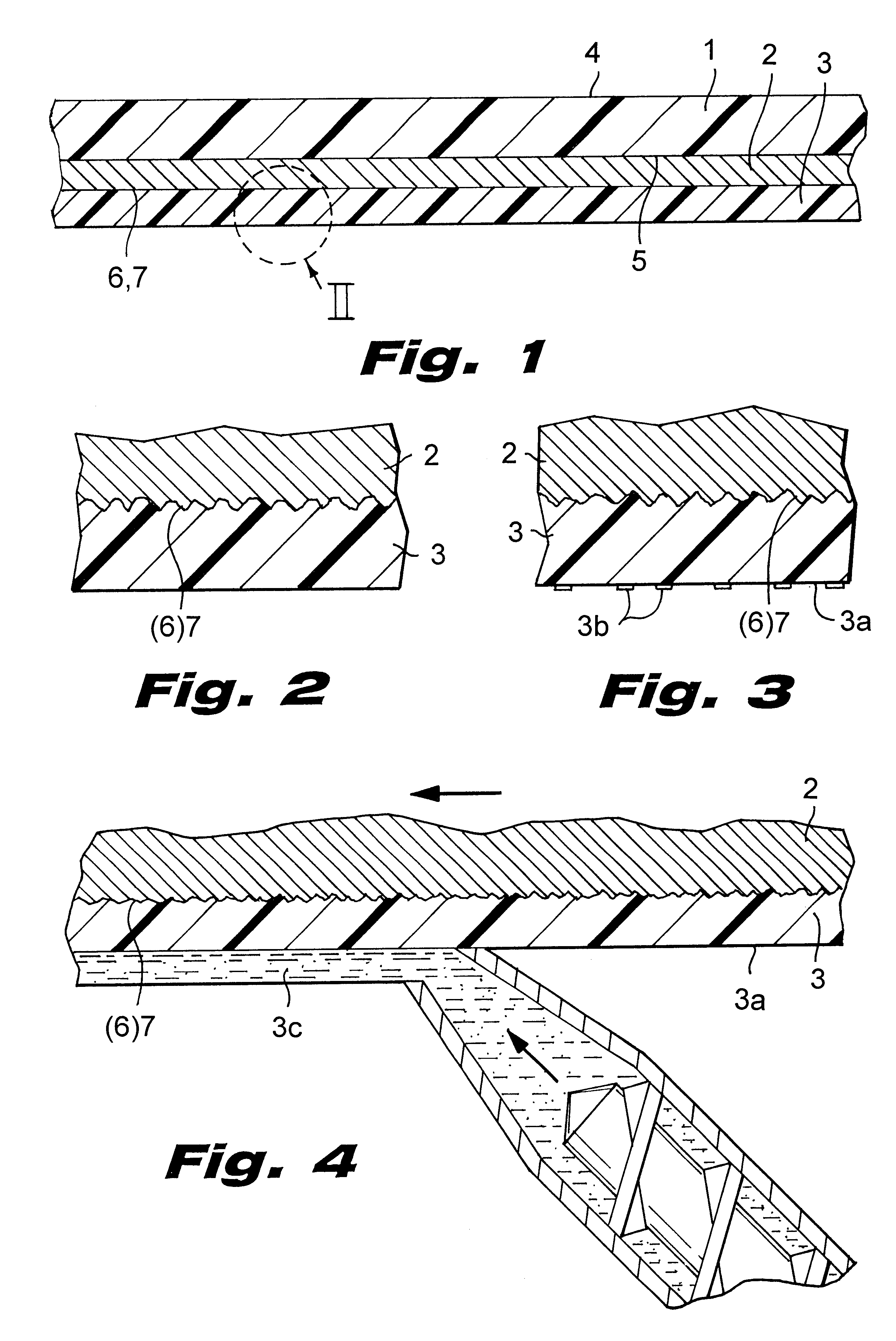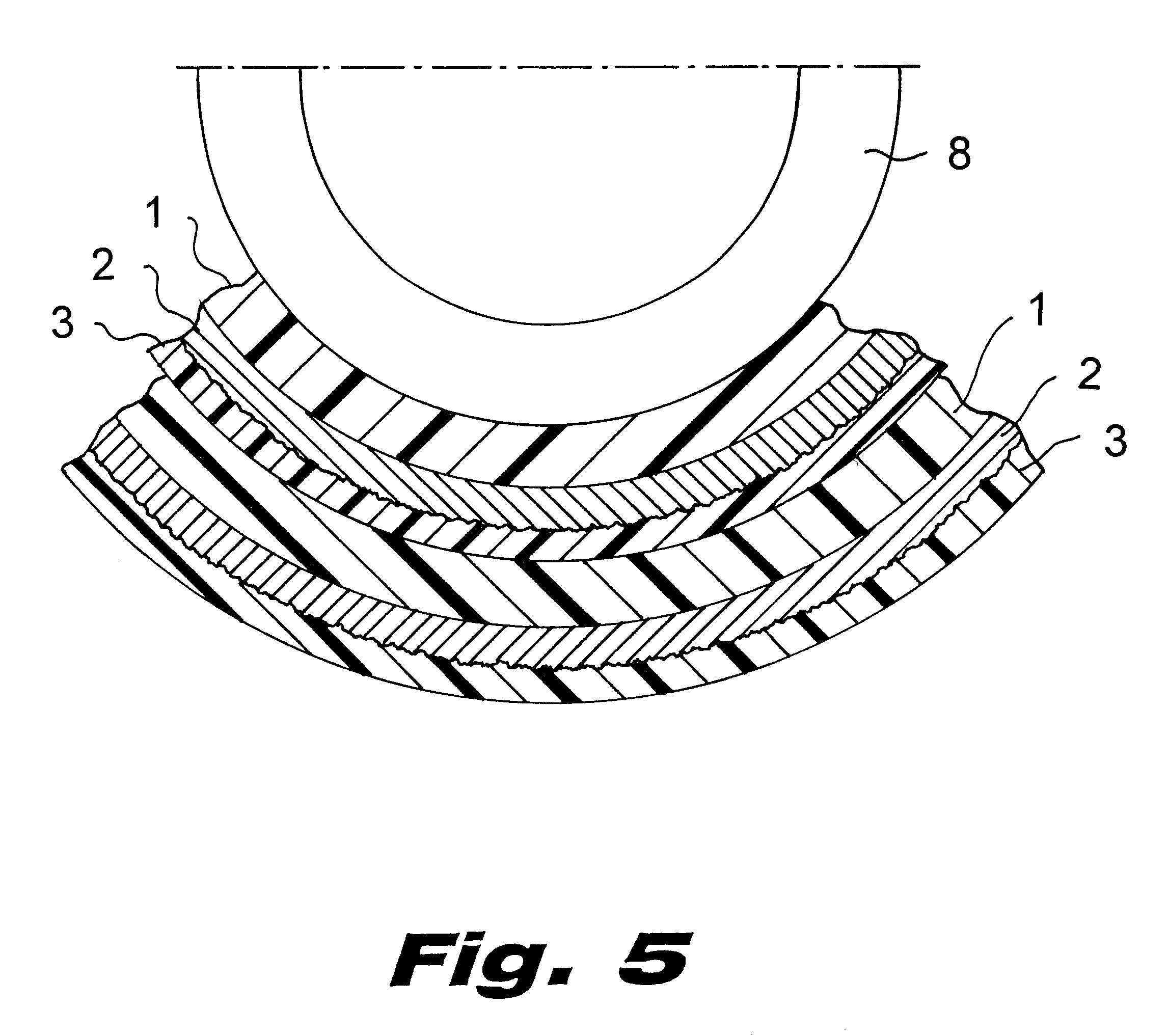Fluid impermeable foil
a technology of impermeable foil and foil, which is applied in the field of foil, can solve the problems of not being fluidtight, not meeting the exact requirements of environmental protection agencies in many countries, and not being suitable for a number of important uses, and achieves the effects of reducing the permeability of the foil to gases, preventing oxidation of the metallic film, and high affinity to metal
- Summary
- Abstract
- Description
- Claims
- Application Information
AI Technical Summary
Benefits of technology
Problems solved by technology
Method used
Image
Examples
example 1
A substrate of polyethylene was provided with a film of aluminum in a standard vaporizing unit. A vaporizer (such as 19) was used in the vaporizing unit for metallic material to apply a protective layer to successive increments of the freshly formed metallic film. The material of the protective layer was a readily meltable resin which was heated in the vaporizer to a temperature of 210.degree. C. This resulted in the development of vapors which were directed against the exposed surface of the metallic film. Condensation of such vapors on the film resulted in the development of a protective layer with a thickness of about 0.5.mu.. The resin was of the type known as PENTALYN 255 which is produced by Hercules Inc., Wilmington, Del. The thickness of the protective layer was uniform, and such layer covered the entire exposed surface of the metallic film, i.e., that surface which faces away from the substrate. Cooling of the vapors on the surface of the metallic film was practically insta...
example 2
A running substrate of polyethylene was provided with a film of aluminum at a customary temperature and pressure. The application of metallic film was immediately followed by the application of vaporized organic material, namely a resin known as PEXIGRUM M 527 which is produced and sold by Rohm GmbH, Darmstadt, Federal Republic Germany. The organic material was heated to a temperature of 235.degree. C. and the thus developed vapors were caused to contact the exposed surface of the aluminum film. The thus obtained protective layer adhered firmly to the aluminum film and had a thickness of approximately 0.4.mu.. The hardness correction of the protective layer was sufficient to permit conversion of the foil into a roll immediately following the formation of the protective layer.
example 3
A substrate of polyester was provided with a film of aluminum in a vaporizing unit at a customary temperature and pressure. A protective layer of organic material was bonded to the exposed surface of the aluminum film immediately after completion of application of aluminum to one side of the substrate. The organic material was a mixture of a resin of the type known as HALLOLYN 104 which is produced by Hercules Inc., Wilmington, Del. and a wax known as E-Wachs 20R 6149 produced by BASF. The ratio of resin to wax in Athe material which was used to form the protective layer was approximately nine-to-one. The two ingredients were mixed in a single vaporizer and were heated to vaporization temperature to develop vapors which were contacted by successive increments of the freshly applied aluminum film. The flexibility of the protective layer containing HALLOLYN 104 and E-Wachs 20R was improved by applying first a stratum of wax in a first vaporizer directly onto the aluminum film and by t...
PUM
| Property | Measurement | Unit |
|---|---|---|
| thickness | aaaaa | aaaaa |
| temperatures | aaaaa | aaaaa |
| temperatures | aaaaa | aaaaa |
Abstract
Description
Claims
Application Information
 Login to View More
Login to View More - R&D
- Intellectual Property
- Life Sciences
- Materials
- Tech Scout
- Unparalleled Data Quality
- Higher Quality Content
- 60% Fewer Hallucinations
Browse by: Latest US Patents, China's latest patents, Technical Efficacy Thesaurus, Application Domain, Technology Topic, Popular Technical Reports.
© 2025 PatSnap. All rights reserved.Legal|Privacy policy|Modern Slavery Act Transparency Statement|Sitemap|About US| Contact US: help@patsnap.com



